Painting exterior walls
When painting exterior walls, safe access is of paramount importance, so consider hiring fixed scaffolding if you need to work at height. Always use paint that is specified for exterior use – for walls the most commonly used paint is exterior emulsion, which is generally called masonry paint. Most masonry paint is water-based, but for areas of the country that get particularly bad weather, such as exposed seaside areas, you can get an oil-based masonry paint which has greater durability. Personally though, I’ve never had any problems just using the standard water-based masonry paint, as long as the walls are given the required preparation. Any algae or mould on external walls must be treated with a fungicidal solution and washed down before any paint is applied. Most exterior paints do contain fungicide, but, in areas of extensive growth, a fungicidal wash is appropriate preparation.
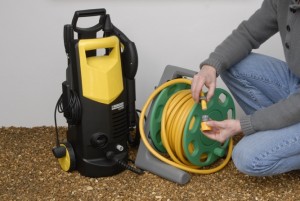 |
1. Any flaky paint must be removed and the surface cleaned down. A pressure washer is the ideal tool for cleaning off the surface and for rinsing down after applying a fungicidal wash. |
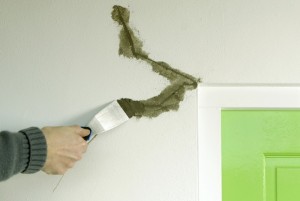 |
2. Cracks in render should be filled with an exterior filler. Mix as directed and use a filling knife to press the filler firmly in place. |
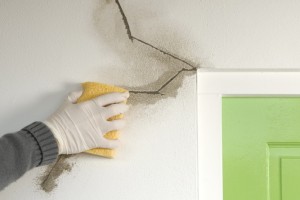 |
3. Allow the filler to go off (partially set) and then use a sponge to smooth off the surface. This reduces the need to sand off excess filler when dry. |
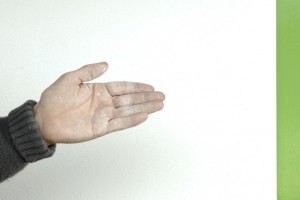 |
4. Any powdery surfaces must be treated with a stabilising solution. This binds the surface making it in a good condition to accept paint. |
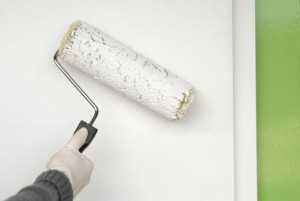 |
5. Once preparation is complete, a roller is ideal for applying paint. However, on rough render surfaces, a large brush is the best tool. |
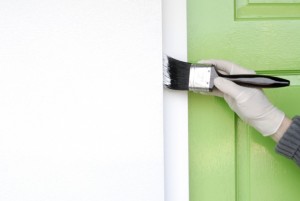 |
6. A brush is also required for finishing off (cutting in) around the edges neatly and precisely, such as next to doors or windows, or where the wall meets the ground. |
Exterior painting tips
- When estimating quantities for exterior painting, be guided by the coverage rates supplied by the paint manufacturer. This can differ greatly from brand to brand, and is also dependent on whether you are painting a bare masonry surface or a previously painted one.
- When painting bare masonry, the first coat will always take much more paint than the second. Some manufacturers recommend diluting the first coat but then you do risk requiring three coats for good coverage when two coats of full strength paint will always cover well.
- Painting exterior walls is a messy business. If you are not painting your woodwork and windows, you must take care to dust sheet them to protect from paint overspray (vital for upvc windows). Using masking tape around frames is a good method and combining this with plastic dust sheets taped over the main part of the window will provide good protection.
- If you are painting the windows and woodwork, then you do not need to be too precise when cutting in onto the frames. In fact a small overlap is ideal as this makes painting much quicker, and then gives a good edge to cut in the window/wood paint onto. For much more on this topic, see my guide – ‘Painting exterior wood’.
